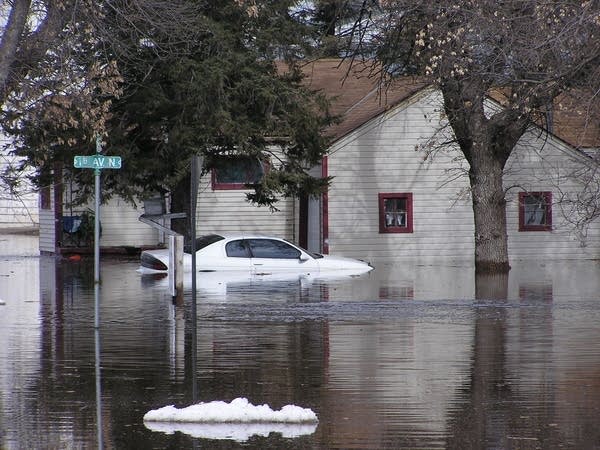State flood aid may be a long time coming
Go Deeper.
Create an account or log in to save stories.
Like this?
Thanks for liking this story! We have added it to a list of your favorite stories.

After all the damage from the southeastern Minnesota floods is added up, the Federal Emergency Management Agency will pay 75 percent of the cost to repair roads, bridges and other public works. There will also be federal grants and loans available to help homeowners and businesses recover.
But everyone agrees it won't be enough. State lawmakers say they'll try to fill the remaining gaps with emergency assistance.
"It's a frustrating process, because nothing ever goes fast enough," said Jeff Pelowski.

Pelowski has first-hand experience in securing flood relief from federal and state agencies. He is the mayor of Roseau, a city of 2,800 people hit by widespread flooding in 2002. He says damage in Roseau topped $100 million.
Turn Up Your Support
MPR News helps you turn down the noise and build shared understanding. Turn up your support for this public resource and keep trusted journalism accessible to all.
"I read what's coming out of the paper in southeast Minnesota, and it's like people need help right now and you want that to happen," he said. "But it's just never quick enough. I know one thing, it doesn't do any good to point fingers. You just go through the process and take it a day at a time, because it does get better."
Three months after the Roseau flood, the Minnesota Legislature met in a one-day special session and approved more than $32 million in flood relief, which was shared among 19 counties.
But Pelowski said individual homeowners in Roseau didn't see any state money until the following year. He said city officials have been back to the state Capitol every year since, seeking additional assistance.
"We were told upfront right away by all the government officials that were here is that you're never going to be whole," he said. "'We're never going to make you whole. OK? There's always going to be a local cost.'"
"We're never going to make you whole. OK? There's always going to be a local cost."
Local costs are even more significant if the damage falls short of the $5 million threshold for federal disaster eligibility.
That was the case earlier this year in Browns Valley, a city of 630 people on the South Dakota border. An ice jam on the Little Minnesota River in mid-March caused an estimated $4 million in damage.
Without any federal aid, Mayor Jeff Backer said Browns Valley had to rely on charitable donations and neighbors helping neighbors. State lawmakers helped out, but Backer said the $2 million in flood relief for Browns Valley is just now in the pipeline.
"We received the appropriation back in May. It didn't get budgeted until July. And of that $2 million, we're seeing the first $500,000 of that actually sometime in the next week or two," Backer said.
The Browns Valley flood damaged 62 houses. Five months later, Backer says 42 of those homes are repaired and occupied. Twenty houses remain empty and need to be demolished. Still, Backer said Browns Valley residents are making an amazing recovery.
"Now if you're on some of the back streets and you look at some of them, then you're wondering well why is this home this way, this home this way? Why are some of the roads broken up? But overall, there's not a huge evidence of the flood," Backer said.
"And again, it has to go to the people of the community," Backer added. "Instead of saying, 'Hey, what is somebody going to give to me?' we're going to use the resources that we have to make the best if it."
Positive attitudes and helpful neighbors will go only so far in southeastern Minnesota. A preliminary American Red Cross survey last week identified about 4,200 homes in the area affected by the flood, including 256 complete losses, 338 with major damage and 475 that were still inaccessible.
FEMA estimates that the six flood-stricken counties in southeastern Minnesota sustained more than $26 million in damage to public infrastructure. That does not cover damage to personal property, including homes. But FEMA estimates that 1,500 homes have been affected by the floods.
Dear reader,
Political debates with family or friends can get heated. But what if there was a way to handle them better?
You can learn how to have civil political conversations with our new e-book!
Download our free e-book, Talking Sense: Have Hard Political Conversations, Better, and learn how to talk without the tension.




